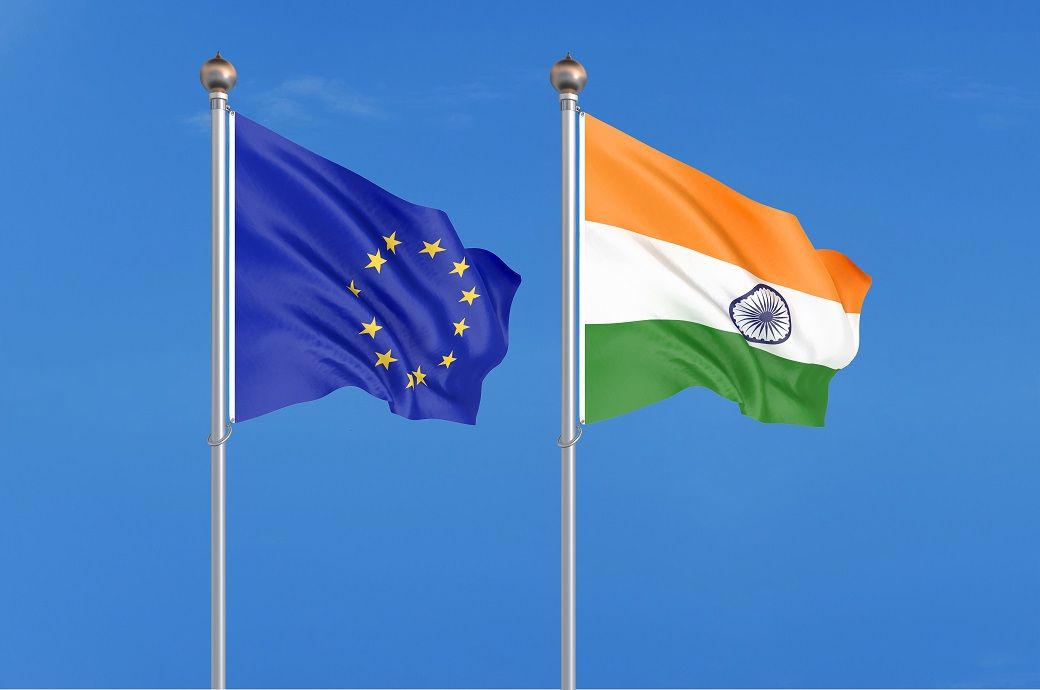
In navigating the shifting contours of global commerce—particularly the impact of US tariffs that have especially dented India’s export trajectory to the US—India has adopted a notably proactive stance. The recently signed Comprehensive Economic and Trade Agreement (CETA) with the United Kingdom marked a pivotal step in this direction, to shield Indian exports from the vagaries of protectionist policies, and as the nation positions itself to bolster market diversification, the focus now intensifies on forging deeper economic ties with the EU.
With its over 450 million-strong consumer base, Europe stands as one of the most lucrative apparel markets globally—an arena, better access to which guarantees a massive competitive advantage. Against this backdrop, India’s trade pacts with the UK, the European Free Trade Association (EFTA), and now the EU are being viewed as strategic levers that could significantly elevate India’s presence in the European supply chain.
A senior official from a leading textiles and apparel body, speaking to Fibre2Fashion, opined that these FTAs will not only enhance India’s export competitiveness but also cushion the economy against the headwinds generated by the US tariffs.
Meanwhile, the Trade and Economic Partnership Agreement with the EFTA, which came into force at the start of this month, has been hailed as a watershed moment in India’s external trade policy by many. The momentum generated by this accord adds a fresh impetus to India’s ties with the EU, a bloc that remains India’s largest merchandise trading partner.
As per some estimates, bilateral merchandise trade between India and the EU stood at a robust $136.53 billion in FY 2024-25, with Indian exports accounting for $75.85 billion and imports from the bloc amounting to $60.68 billion.
The EU alone reportedly absorbs nearly 17 per cent of India’s total exports—a testimony to the bloc’s vital economic significance.
Buoyed by the favourable outcome of the 14th round of trade negotiations held recently, stakeholders on both sides are now showing confidence in signing the deal within the agreed timeframe.
With the EU’s economic footprint reportedly spanning $19.99 trillion, a partnership between the world’s fastest-growing major economy and this formidable bloc holds transformative potential, according to industry insiders.
As per reports, the talks have been expedited, with most of the critical sensitivities on both sides reportedly finding near-resolution. Only a few sticking points—largely concerning non-tariff barriers and select sectoral interests—remain under deliberation.
These are also widely expected to be bridged in the near term.
Industry representatives maintained that the zero-duty access envisaged under the proposed FTA will provide Indian goods with a substantial price advantage, allowing them to effectively compete with rivals in the European marketplace.
Moreover, these agreements are also expected to reduce India’s over-reliance on the US market, thereby insulating its exports from any policy volatilities across the Atlantic in future.
Issues like the EU’s Carbon Border Adjustment Mechanism (CBAM) persist, though. Set to be fully operational by January 1 following a two-year transition, CBAM seeks to impose a carbon tax on imports, based on the emissions generated during the production process.
India has strongly opposed the move, arguing it constitutes a disguised trade barrier. Commerce and Industry Minister Piyush Goyal reportedly took a firm stance on the issue, underlining India would not hesitate to retaliate if its exports are adversely impacted.
Speaking in New York last month, the Commerce and Industry Minister cautioned that the CBAM framework could potentially isolate Europe and stoke inflationary pressure within the bloc.
The Indian Government has also expressed its discomfort with the EU’s insistence on linking climate policy with trade, viewing it as an overreach.
Nonetheless, remarks by EU Commissioner for Trade and Economic Security Maroš Šefcovic have rekindled hopes. He described a meaningful EU-India FTA as a “gateway to unlocking vast potential,” one that would dismantle tariff and non-tariff hurdles, invigorate investment flows, and reinforce the tenets of open, rules-based global commerce.
Meanwhile, according to the latest media reports, Commerce Secretary Rajesh Agrawal confirmed that the two sides concluded their 14th round of negotiations in Brussels last week, even if a few Indian officials have stayed back to wrap up discussions on the Rules of Origin (ROO) issue.
“We are in the final stage of negotiations, which is the most difficult, as the most complex issues are addressed at the end. The progress in the last round has been very encouraging,” reportedly underlined the Commerce Secretary.
As negotiators work with determination under a political mandate—set jointly by Prime Minister Narendra Modi and European Commission President Ursula von der Leyen—to finalise the agreement by the close of 2025, optimism persists that 2026 may well dawn with a historic EU-India FTA in place, and should fortune favour diplomacy, this milestone may even coincide with the long-awaited resolution to the US tariff issue, ushering in a new era for India’s overseas trade.
ALCHEMPro News Desk (DR)
Receive daily prices and market insights straight to your inbox. Subscribe to AlchemPro Weekly!